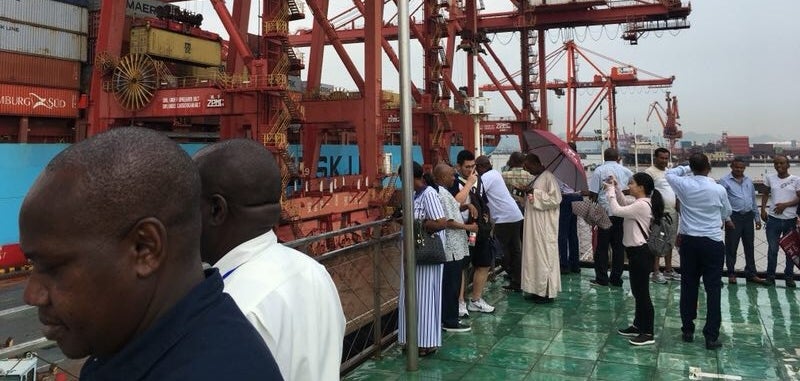
This September I traveled to Beijing and Ningbo, China, to participate in the second Africa China World Bank Education Partnership Forum on Technical and Vocational Education and Training (TVET). The Forum--co-hosted by the China Institute for Education Finance Research, Peking University, Ningbo Polytechnic and the World Bank Group-- served as a platform for discussion and knowledge exchange to encourage stronger partnership efforts between African TVET institutions and some of China’s best ranking TVET centers and industries.
The initiative, launched in 2017, offers a space for collaboration and partnership between leading universities, vocational education institutions, and private sector in both East Asia and Africa. This year’s Forum included TVET ministers and directors from across the region, including Chad, Ivory Coast, Ethiopia, Kenya, Tanzania, Ghana, Niger, and Nigeria. The goal was to address the challenges for TVET in the African continent, particularly in the Sub-Saharan region, such as low access, quality and relevance, and inadequate policy and financial support, as well as opportunities, including the ongoing economic transformation and regional integration initiatives which boost the demand for skilled labor. The week-long event offered government officials, TVET experts and development professionals the opportunity to learn first-hand from China’s TVET model and practices and hear more of the country’s national model geared toward demand-driven training.
China’s TVET Model and Experience
The Chinese TVET model can be seen across three stages of education. First, TVET is introduced at the secondary education level to help initiate and train operations-oriented skilled workers. Second, TVET is later advanced at the tertiary education level to offer more developed skills and competencies for demanding areas such as manufacturing, management, services and construction. Third, education institutions and companies offer in-service training to further sharpen skilled workers’ already-acquired technical knowledge and capabilities, to meet current labor market demands. What is truly unique to the Chinese TVET model is that it promotes vertical and horizontal mobility and progression between different qualification levels, and between TVET and general and higher education.
The government’s vision is to develop a world-class vocational education system by 2020, and it provides concentrated financial and technical assistance for key vocational colleges to serve as models for TVET reform and innovations. The policy encourages strong industry-education integration to ensure TVET is demand-driven and relevant. Quality assurance mechanisms are in place to ensure the quality of training programs, and funding for vocational education is guaranteed for all – particularly for students coming from low-income families to promote equity. TVET institutions are increasingly using technology in the delivery of training to produce an ICT-competent workforce.
After having learned more about the Chinese model of governance on TVET, participants from Africa and international institutions acknowledged the strategic importance of designing and investing in TVET education as a means to achieve economic transformation. Participants also learned how essential it is to change perceptions around TVET by creating clear paths to increase qualifications leading to better jobs.
Some of these lessons will be incorporated by participants from selected TVET centers in Africa as part of the World Bank’s East Africa Skills for Transformation and Regional Integration Project (EASTRIP), developed under the platform of the Pan-African Partnership for skills in Applied Sciences, Engineering and Technology (PASET). EASTRIP aims to increase the access and improve the quality of TVET Institutes and to support regional integration in East Africa. The project will support 16 TVET centers in Kenya, Ethiopia and Tanzania to strengthen their capacity to produce high quality skills for the regional sector markets in railway, highway, port management, energy, light manufacturing, and ICT, in addition to helping create national environments conducive for TVET and enhancing regional collaboration.
Smart and timely investments in human capital present a transformational opportunity for African nations. This initiative is part of the World Bank Group’s efforts, through PASET, to accelerate the creation of highly skilled technical personnel in Africa and foster strong local scientific and technical capacity to propel the economic transformation of the region.


Join the Conversation